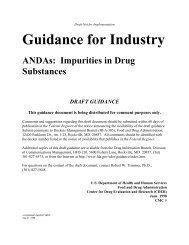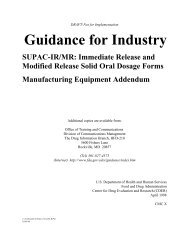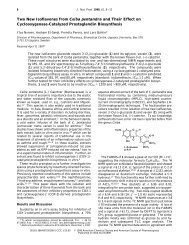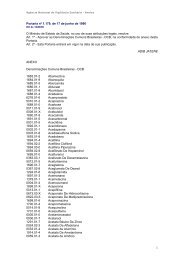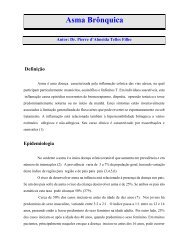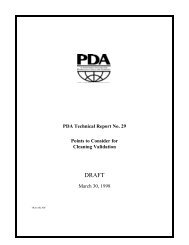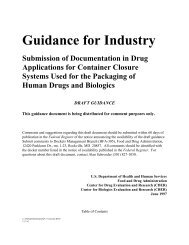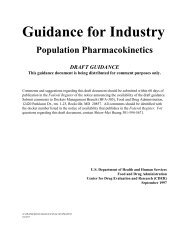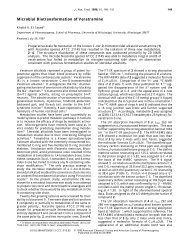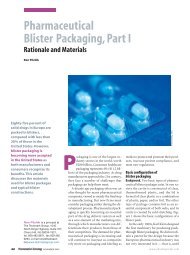Bioanalytical Methods Validation for Human Studies - Pharmanet
Bioanalytical Methods Validation for Human Studies - Pharmanet
Bioanalytical Methods Validation for Human Studies - Pharmanet
You also want an ePaper? Increase the reach of your titles
YUMPU automatically turns print PDFs into web optimized ePapers that Google loves.
Draft — Not <strong>for</strong> Implementation<br />
demonstrate that a particular method <strong>for</strong> the quantitative measurement of an analyte in a given<br />
biological matrix, such as blood, plasma, serum, or urine, is reliable and reproducible. The<br />
parameters essential to this validation include (1) accuracy, (2) precision, (3) sensitivity, (4)<br />
specificity, (5) linearity, and (6) reproducibility. In addition, the stability of the analyte in the<br />
matrix under study storage conditions should be determined. <strong>Validation</strong> involves documenting<br />
through the use of specific laboratory investigations that the per<strong>for</strong>mance characteristics of the<br />
method are suitable and reliable <strong>for</strong> the intended analytical applications (Shah 1992, Taylor 1983).<br />
The acceptability of analytical data corresponds directly to the criteria used to validate the<br />
method.<br />
Published methods of analyte analysis are often modified to suit the requirements of the laboratory<br />
per<strong>for</strong>ming the assay. These modifications should be validated to ensure suitable per<strong>for</strong>mance of<br />
the analytical method. When changes are made to a previously validated method, the analyst<br />
should exercise judgment as to how much additional validation is needed. For minor<br />
modifications, such as a change in the ratio of solvents <strong>for</strong> elution, a change in buffer system, the<br />
number of extractions of the biological matrix, or a small change in column temperature to obtain<br />
better separation, only limited validation may be recommended. For major modifications, such as<br />
change of an instrument, solvent system, detector, or temperature, full validation of the modified<br />
method should be per<strong>for</strong>med.<br />
The analytical laboratory conducting BA and BE studies should closely adhere to FDA’s Good<br />
Laboratory Practices (GLPs) (21 CFR Part 58) and to sound principles of quality assurance<br />
throughout the testing process. In addition, the analytical methods <strong>for</strong> in vivo bioavailability<br />
studies must meet the criteria in 21 CFR 320.29. The analytical laboratory should have a written<br />
set of standard operating procedures (SOPs) to ensure a complete system of quality assurance.<br />
The SOPs should cover all aspects of analysis from the time the sample is collected and reaches<br />
the laboratory until the results of analysis are reported. They also should include record keeping,<br />
security and chain of sample custody (accountability systems that ensure integrity of test articles),<br />
sample preparation, and analytical tools, such as methods, reagents, equipment, instrumentation,<br />
and procedures <strong>for</strong> quality control and verification of results.<br />
The process by which a specific analytical method is validated may be divided into (1) reference<br />
standard preparation, (2) pre-study validation <strong>for</strong> analytical method development and method<br />
establishment, and (3) in-study validation to include study per<strong>for</strong>mance, drug analysis, and<br />
acceptance criteria (Shah 1992, Brooks 1985). These three processes are described in the<br />
following sections of the guidance.<br />
III.<br />
REFERENCE STANDARD<br />
j:\!guidance\2578dft.wpd<br />
12/14/98 2



